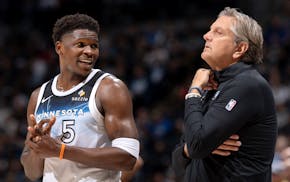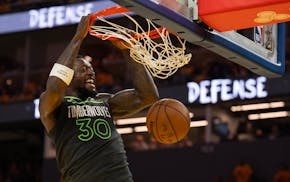The 141st season of Gophers football kicks off in less than a month, leaving precious little time for nostalgia or sentiment over how much has changed with the Big Ten now that a new era is upon us.
This isn't even Glen Mason's Big Ten anymore. That was an eternity ago.
The Big(ger) Ten has 18 members starting this season, and this likely is not the end of expansion before the conference reaches its Big(gest) size. The guess is that 20 is the ideal target.
So what does this sea change mean for the 2024 edition of the Gophers? The only definitive answer here is that life didn't become easier for them with the arrival of four Pac-12 schools, including blue blood programs USC and Oregon.
As a close follower and chronicler of Gophers football for more than two decades, I can't recall having less gut feel for a season than the one at hand.
The Gophers have a new quarterback, new defensive coordinator, new special teams coordinator, new transfer portal additions, new opponents in an expanded league and no lifeboat otherwise known as the West Division.
Predicting a final record would be throwing darts at a board because their schedule is littered with what look like toss-up games on paper.
The death of Big Ten divisions has logic behind it, but it puts all but a handful of schools in an uncomfortable spot. The conference could no longer avoid the reality that the East vs. West divisions had as much competitive balance as a young Mike Tyson squaring off against a welterweight.
The West was demonstrably inferior. That meant the Big Ten championship game — the league's marquee event — did not feature its two best teams.
The new division-less format guarantees that the top two finishers will play in the championship game while providing teams and fans the opportunity to see more opponents. Those are positive developments.
The one downside is that by mid-October, many teams will lose the weekly drama and intrigue of being in a division race.
We all had a good time making fun of the West Division. That grouping often produced bad, boring football that deserved some mockery. But at least fans of those schools found a carrot in the carnage — a chance to win the division and play in the championship game. That maintained suspense through the end of the season.
Teams stuck in the middle — or even slightly higher — of the Big(ger) Ten will have a much harder time being viable contenders in the conference without divisions because Ohio State, Michigan, Oregon and Penn State are not going to tumble back to the pack. The comeback to that is likely, "Tough, deal with it and get better," but that's a lot easier said than done.
The Gophers are firmly in that middle tier. Advancing beyond that will prove difficult until P.J. Fleck develops a credible passing game.
The internal hope/belief is that New Hampshire graduate transfer Max Brosmer solves that problem this season and deftly handles the leap from FCS to Big Ten. Fleck and others around the Gophers rave about Brosmer's impact since joining the program. The next step is for him to revive a passing game that has ranked among the least productive in major college football in recent seasons.
Not every area is unproven heading into Fleck's eighth season. The Gophers have talent, experience and depth along both lines, which is always a good starting point in football.
Running back Darius Taylor is a star. Daniel Jackson is one of the premier receivers in the Big Ten. Linebacker Cody Lindenberg is back, a difference-maker when healthy.
A preseason poll conducted by Cleveland.com picked the Gophers to finish 12th out of 18 teams. Where they ultimately finish, of course, hinges largely on Brosmer, his transition to the Big Ten and the offense's ability to become more well-rounded.
No predictions here. Too many unknowns to guarantee any outcome. Curiosity is my prevailing sentiment heading into this epoch of Big Ten football.
Scoggins: Edwards' shoutouts are key to sustained success for Wolves

Scoggins: To win a title, the Wolves have the three most important pieces

Scoggins: Gophers' Greek connection could produce NCAA hammer throw title. But from which competitor?

Scoggins: That look. Those eyes. Ant emerged from halftime ready to take over Game 4

